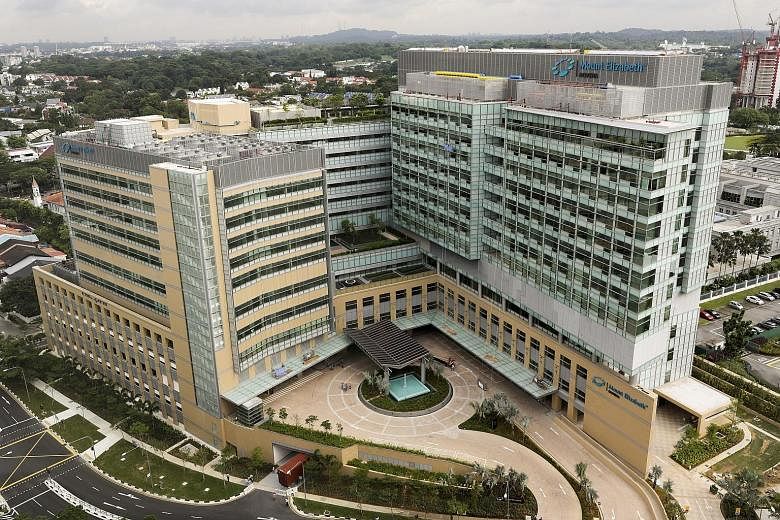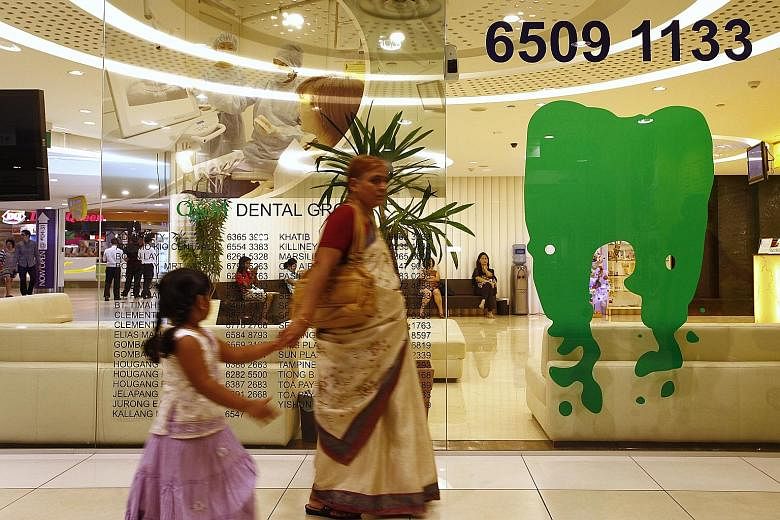Singapore's private healthcare industry faces challenges here but expansion overseas holds the promise of a healthier future, said Maybank Kim Eng.
It noted this week that increased regulation, a decline in medical tourism and cheaper alternatives in public healthcare are causing the big players pain. But heading overseas can pay off, Maybank Kim Eng said, especially in emerging markets in the region.
It helps that Singapore healthcare players have established a reputable brand name in other countries and among medical tourists, which is easing the transition to overseas markets.
Q&M Dental Group, IHH Healthcare and Health Management International (HMI) are three locally listed players that have found overseas expansion a winning elixir.
Take Q&M, which made two big bets on China in 2014. It snapped up a stake of around 60 per cent in Shenyang-based Aoxin Stomatology Group and a 100 per cent holding in dental materials firm Aidite High Technical Ceramic, based in Qinhuangdao.
It followed that in 2015 by acquiring eight dental clinics here.
Q&M operates 71 dental outlets in Singapore, 12 in China and six in Malaysia. Revenue from its dental and medical clinics rose by 21 per cent to $118.7 million in 2016 from a year earlier. The firm is also involved in joint ventures with major Chinese players, which could yield more expansion opportunities.
-
Industry challenges
TOUGHER RULES
The Singapore Medical Council has tightened regulations on billing systems at private healthcare centres to prevent excessive pricing and maintain high ethical standards.
DECLINE IN MEDICAL TOURISM
Large healthcare players, such as Raffles Medical and IHH Healthcare, have been among the hardest hit by this trend.
CHEAPER ALTERNATIVES IN PUBLIC HEALTHCARE
More public hospitals are being built and more government subsidies are being provided.
IHH Healthcare is another major player that has replicated its business model overseas.
Besides the key markets of Hong Kong and China, IHH has established itself in Singapore, Malaysia, Turkey and India.
In 2015, it acquired Global Hospitals, a private healthcare chain in India with five hospitals under its belt.
Last year, IHH confirmed that it would build two hospitals in China - the Gleneagles Hong Kong Hospital and ParkwayHealth Chengdu.
The firm also opened the Acibadem Altunizade Hospital in Istanbul in March.
First-quarter net profit at IHH rocketed 100 per cent to RM470 million (S$152 million) compared with the same period a year earlier. Revenue for the three months to March 31 rose 8 per cent to RM2.68 billion.
HMI is another health chain that has turned to aggressive overseas expansion in recent years.
HMI operates two tertiary hospitals - these provide care by specialists after referrals from general hospitals - in Malaysia. It operates Malacca-based Mahkota, which opened in 2000, and Johor-based Regency, which opened in 2007.
Both hospitals stand to gain more patients from surrounding mega-development projects.
The Malacca Gateway project, a deep-sea port collaboration between Kuala Lumpur and Beijing to boost shipping and logistics along China's planned Maritime Silk Road, is expected to benefit Mahkota's operations.
The bulk of Regency's earnings come from corporate customers, which comprise about 30 per cent of its patients due to its proximity to industrial areas.
HMI's revenue is expected to increase by 14 per cent this year, with an 11 per cent rise next year and 10 per cent in 2019.
Apart from overseas expansion, growth trends in Singapore are also brightening the prospects of the local private healthcare sector.
The ageing population is a key driver of private healthcare growth. The number of citizens aged 65 and above is predicted to double by 2030.
The prevalence of chronic diseases, like cancer and heart problems, has increased over the years, which could push up demand for complex specialist treatments like oncology and cardiac procedures.
Singapore's public and private healthcare sector has a combined market cap of $34 billion. This is a ten-fold increase in its total market cap over the last 10 years.


